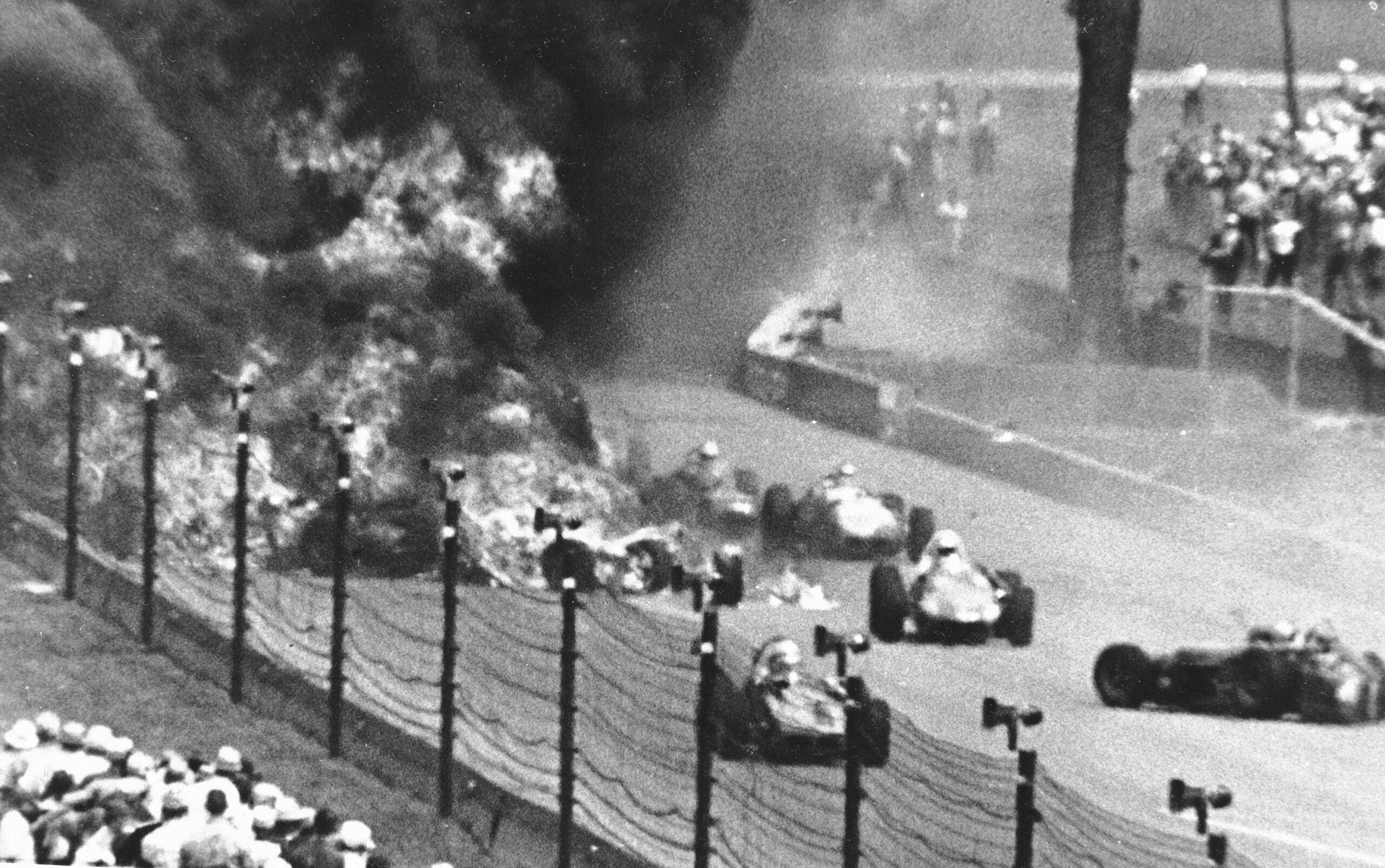Deaths and tragedy from the 1973 Indy 500 opened the door for safety evolution in racing
INDIANAPOLIS (AP) — Johnny Rutherford and Gordon Johncock delivered spectacular results at the 1973 Indianapolis 500 that were overshadowed by perhaps the worst month in the history of the storied race.
Rutherford won the pole with a record-breaking, four-lap average speed of 198.413 mph and Johncock wound up with the first of his two Indy wins, but it was a grim across the rest of Gasoline Alley.
Art Pollard was killed in a pole day crash. David Savage died from injuries sustained in a terrifying race-day crash. In the chaos after Savage’s wreck, pit-sign board holder Armando Teran was fatally struck by a safety truck. And roughly a dozen spectators were burned when Salt Walther’s fuel tanks ruptured as his spinning car destroyed part of the catch fence.
“I don’t know what the rest of the guys thought, but I thought, ‘Let’s just get this damn thing over, you know, this has not been good,’” Rutherford recalled. “That was the way the business was. You know, A.J. (Foyt) and I have lost so many friends in the business.”
Pretty much any successful IndyCar driver from that era — Johncock, Rutherford, Foyt, Mario Andretti, the Unser brothers, Parnelli Jones — felt the same way.
Back then, deaths and serious injuries were the norm.
Foyt, for instance, still recalls his January 1965 stock car crash in Riverside, California, caused by a brake failure. He went down an embankment and actually was pronounced dead by the track’s doctor — only to be saved when Jones stepped in.
Yes, Foyt was lucky, especially at a time when safety measures seemed almost taboo.
“Without better safety, this sport never would have survived because corporations were not going to spend millions of dollars to go to funerals,” Andretti said in the days before Sunday’s Indy 500. “We would start the year with a drivers’ meeting, and you wouldn’t know who would finish the year. That never changed. There were years we lost six, seven drivers.”
It wasn’t that sanctioning bodies did nothing.
The fiery crash that took the lives of Eddie Sachs and Dave MacDonald during the Indy 500 in 1964 led to more firefighters being hired for races. In 1967, 30 of the 33 Indy 500 starters donned the late Bill Simpson’s innovative fire suit; the double fatality in 1964 also led to the installation of rubber bladder tanks that military helicopters were using in Korea and Vietnam to limit fuel spillage.
But the 1973 race forced tack and series officials to finally pay attention to drivers’ concerns.
“I think they started to realize the drivers knew what they needed and what they wanted for safety,” said Johncock. “It was hard because USAC (the U.S. Auto Club) didn’t want to listen to it.”
In the aftermath — Savage finally succumbed to his injuries 33 days after the race — the USAC agreed to make rules changes.
It reduced the size of rear wings by nine inches, cut fuel tank capacity from 75 gallons to 40, moved those tanks to the left sidepod away from the grandstands — and where most side impacts occur on oval tracks — and required pit-sign board holders to remain at their posts the entire race.
Indianapolis Motor Speedway went even further in 1974.
The track owner at the time, Tony Hulman, widened the pit lane entrance, eliminated the angled inside wall in the fourth turn and moved the flagman from the inside near the front of pit road to a starter’s stand above the cars and the outside wall, where it remains today. The height of retaining walls was increased, catch fences were bolstered and some of the trackside box seats were removed.
“It was an inflection point for safety,” speedway president Doug Boles said when asked about the impact of 1973.
Eventually, cockpits were repositioned to protect the legs and feet of drivers and tubs were made of stronger, safer materials. IndyCar introduced the world to traveling safety teams in 1981 and SAFER barriers in 2002. HANS devices, which stabilized heads and necks of drivers, became mandatory, as did tethered tires to prevent them from flying into the stands and more recently, head-protecting aeroscreens. Better car designs reduced energy inside the cockpit, too, lowering the risk of serious injuries.
“I’d have a lot better legs if the cars were as good back then as they are today,” Johncock said.
Of course, risk always exists when cars are turning laps over 230 mph. Seven deaths have occurred on Indy’s 2-5-mile oval in the half-century since that deadly May. Four took the lives of IndyCar drivers — three in Indy 500 practice, the last being pole-winner Scott Brayton in May 1996, and the fatal test crash of rising star Tony Renna in October 2003.
Serious injuries now often lead to immediate attention as lessons from that tragic month 50 years ago loom large.
“Art Pollard was the first IndyCar driver I ever met,” said Tim Baughman, IndyCar’s senior director of track safety. “I was a Boy Scout, he was sponsored by the Boy Scouts and I met him at the (Indiana) state fairgrounds the winter before the ‘73 race. I was 12 years old, so it hit a little closer to home.
“The late ‘60s and early ’70s were a really horrific time to be a race-car driver, but I think it all came to a boil in ’73 and it changed everything.”
___
AP auto racing: https://apnews.com/hub/auto-racing and https://twitter.com/AP_Sports



